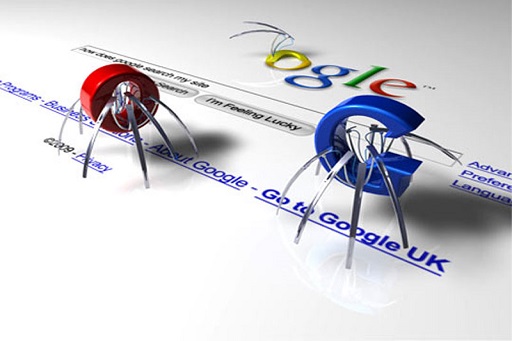How do search engines work?
In this article, we will take a closer look at search engines and their performance on the web. Knowing how users use search engines and how search engines rank web pages can be our most important criteria for understanding SEO techniques and site optimization.
How do search engines work?
Search engines have three main functions for analyzing web content and providing proper service to their users:
Crawling – Creep in the site’s content
Indexing – preparing a copy and analyzing its content
Results – Display appropriate results based on indexed content
In the following, we will examine each of these steps together.
What is crawling?
Google has designed software robots to access the content of the site, which they enter into your site like a user and crawl to try to get the content of the page. In this process, all sections, including content, titles, images, links, and anything else that can be accessed by Google’s robot, will be reviewed.
Robots are likely to encounter links to other pages when reviewing a page. If this link is not new, the robot will enter that page as well and continue on its way to the web. One of the reasons why backlinks are so important in SEO is the behavior of robots to identify and index new pages. Google bots usually refer to the same pages again at different time intervals (variable for each page) and check for changes.

Google’s bots use specific protocols to check web pages, and if you don’t want a page on your site not checked by Google and displayed in Google results, you can do so via the robots.txt file.
What is crawling?
Google has designed software robots to access the content of the site, which they enter into your site like a user and crawl to try to get the content of the page. In this process, all sections, including content, titles, images, links, and anything else that can be accessed by Google’s robot, will be reviewed.
Robots are likely to encounter links to other pages when reviewing a page. If this link is not new, the robot will enter that page as well and continue on its way to the web. One of the reasons why backlinks are so important in SEO is the behavior of robots to identify and index new pages. Google bots usually refer to the same pages again at different time intervals (variable for each page) and check for changes.
Google’s bots use specific protocols to check web pages, and if you don’t want a page on your site not checked by Google and displayed in Google results, you can do so via the robots.txt file.
What is Google Index?
The process of indexing begins when the review of a page is completed by the robot. Imagine that the web is a very large library and Google is trying to make a complete list of available books, the subject of each and its contents. The time it takes for a page to be indexed by Google is not always the same, and various factors affect it.
Every time a Google robot visits your page if it notices changes on that page; It involves changing the content or adding content. The Google indexing process is done again for that page.
Search results are never displayed until a page is indexed by Google. So the first step in finding search results is to make sure the pages are indexed.
Make a list of search results for the user
Search results are very important for both users and website owners. When you search for your phrase in Google as a user, Google will suggest results related to your search from the pages it has indexed before. This process is very complicated because out of hundreds of millions of websites and perhaps billions of pages on the web, you have to identify and display the results you want.
A variety of algorithms have been developed to do this, and Google is constantly improving and optimizing these algorithms. The process of reviewing pages and rankings has never been announced by Google, but based on webmaster’s observations and training published by Google itself, several influential factors have been identified for this ranking. Google has announced that it will consider more than 200 factors for ranking pages.
The effect of user behavior on search results
The first thing we need to learn in SEO is to take care of the user and the SEO at the same time and strike the right balance between the two. You put all your focus and energy on SEO success, but users who log in to your site will not be satisfied with the page they view. User behavior in this situation can negatively affect your SEO and you will lose your position over time.
Imagine that users search for a pizza recipe and search for this phrase in Google, Google displays your site in its results and the user selects you. But after entering your site for any reason (for example, lack of proper content, low page speed, inappropriate design, bad font, lack of correct display on mobile) it is quickly removed and returned to search results. This behavior of the user is understandable by Google and shows him that the user is not satisfied with your site.
Unsatisfied users with a page, if it is repeated several times, can cause you to lose your position in Google results. The opposite of this story is when the user finds your rankings lower and enters your site, but is satisfied with its content and no longer searches for this phrase in Google. The user may even display a level of satisfaction with you and Google by sharing your content or posting comments. In this case, you will grow faster and gain a better position in Google results.
The path of users in search results and sites can be varied, but the most common possible method is as follows:
– The user first goes to Google to receive information, product or answer a question
– Search for your desired phrase in Google
– View and review the first results provided by Google.
– Selects one or more options on the list.
– Checks the content of the opened pages and looks for your answer.
– If you do not receive a response, go back to Google and check the next results or search for another phrase.
This process takes place in a cycle so that the user can get the answer they want. This behavior is fully monitored by Google, and in the meantime, some sites are improving and some are declining.



Leave a Reply